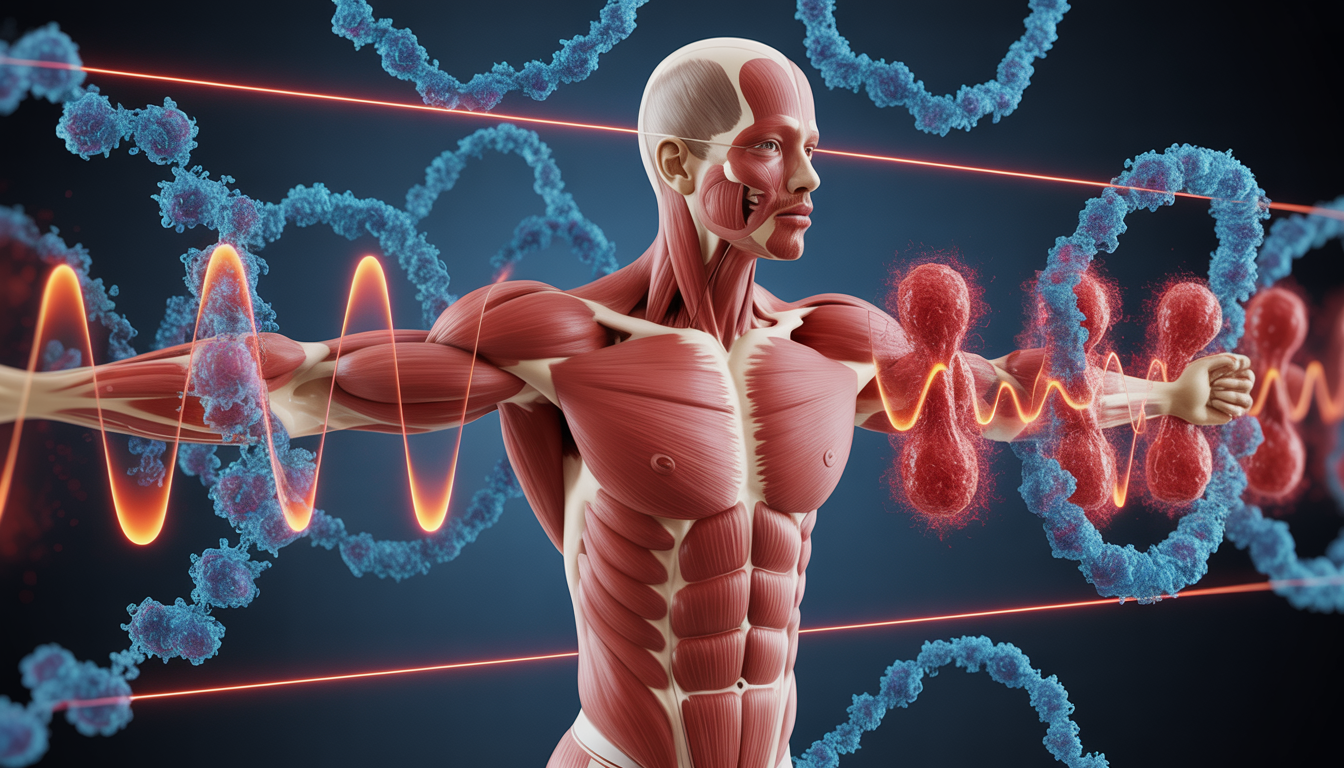


Discover Agmatine Sulfate Benefits & Key Effects
By: Robert A. Schinetsky
No doubt you've seen outlandish claims before when shopping for the perfect pre-workout supplement. These slick, eye-grabbing slogans are the bread and butter of savvy supplement brands and masterful marketing agencies desperately vying for your hard-earned dollars. Say the right words, or hype the right ingredient, and the uninformed consumer will pay hand over fist for those epic gains they so desperately seek, yet never seem to find.
You can't fault these companies for trying to make a buck—they run a business after all—but there is a bigger problem with the hype on these ingredients: very few, if any, have any real scientific backing showcasing their ability to enhance performance.
While there are any number of ingredients we could choose to highlight, we're going to zero in on one that's touted to be the ultimate pump enhancer, yet when you drill down, it might actually be the ultimate pump deflator.
The supplement we're spotlighting today is Agmatine Sulfate, a key player in the agmatine supplement market, and we're going to see if you should or shouldn't be using this in your pre-workout.
What is Agmatine Sulfate?
Agmatine is a naturally occurring derivative of the amino acid arginine produced in rather small amounts by the mitochondria in your liver.[1] It functions as a dual neurotransmitter/neuromodulator in the brain and has been dubbed by many as an essential ingredient in any agmatine sulfate nitric oxide boosting supplement. Though it is found in the brain, the highest levels of agmatine are found in the gut, generated from gut microbes residing there. Agmatine is also found in fermented foods as well as supplements.[1]
Agmatine sulfate benefits are often highlighted in discussions around its potential effects on mood, pain management, and blood sugar regulation. It is important to examine agmatine comprehensively to understand its full range of effects and applications.
How Does Agmatine Work?
Agmatine is first and foremost a powerful neurotransmitter targeting multiple receptors in the body, which gives it a wide array of effects and uses. It also serves as a neuromodulator, neuroprotector, and cytoprotector, defending against the deleterious effects of toxins.[2,3] Research to date has shown it can be beneficial for treating neuropathic pain and drug addiction as well as protecting the brain.
Agmatine has been shown to agonize imidazoline receptors[4], which can help combat ethanol-induced anxiety, suggesting agmatine may be beneficial for enhancing mood and sense of well-being.[5] Another byproduct of imidazoline receptor activation is that agmatine may also improve blood sugar regulation, showcasing some of the agmatine benefits.
When activated, imidazoline receptors increase β-endorphin, an opioid receptor activator that decreases pain and improves your response to pain, stress, or fear.[6,7] More importantly, increased β-endorphin has also been shown to enhance glucose uptake into skeletal muscle.[8,9]
All of these benefits are all well and good, but these aren't why companies include agmatine in pre-workouts. They include agmatine for its purported role in generating nitric oxide and producing powerful muscle pumps.
What about Nitric Oxide?
As you probably know, arginine is the amino acid your body uses to synthesize nitric oxide, a powerful cell signaling molecule that serves a variety of functions, but the one we're particularly interested in regards to performance is vasodilation—the dilation (widening) of blood vessels. With more open blood vessels, more blood flow, oxygen, and nutrients can get to your muscles, improving performance, pumps, and recovery.
The body has three different forms of nitric oxide:
eNOS (endothelial) - promotes vasodilation in the endothelial tissue lining your blood vessels, leading to increased blood flow. FYI, this is the kind of nitric oxide increase you want from your pre-workout.
iNOS (inducible) - supports immune function, but left unregulated can lead to inflammation in the body.
nNOS (neuronal) - signaling molecule that supports neuron communication in the brain. Too much though can reduce affect neuronal growth and repair.
Now, here's where things get a bit tricky regarding agmatine. Research has shown that agmatine is a direct inhibitor of iNOS via inhibition of N-Methyl-D-Aspartate (NMDA) receptors.[10,11] Other studies have shown it may cause vasodilation by way of its ability to agonize alpha-2-adrenergic receptors,[12] the same receptors inhibited by yohimbine.
Further complicating this is another animal study where rats were given agmatine and citrulline (an arginine precursor and powerful nitric oxide booster) simultaneously. Results showed that the rats had lower citrulline production via nitric oxide synthase, indicating that combining agmatine and citrulline competes and hinders nitric oxide production, limiting your pumps. This highlights the debate of agmatine vs citrulline in supplement formulations.[13]
Finally, there is the issue of arginase, the enzyme that degrades arginine in the body. Left to its own devices, arginase will break down arginine, ultimately limiting nitric oxide production. Agmatine is an endogenous inhibitor of arginase[14], so, at best, it may be an indirect nitric oxide booster by way of stopping the enzyme that reduces nitric oxide production.
Agmatine Sulfate Benefits and Side Effects
Agmatine sulfate benefits extend beyond its debated role in nitric oxide production. It has been researched extensively for its potential therapeutic effects, including mood enhancement, pain management, and neuroprotection. However, when considering agmatine sulfate, it is also important to be aware of potential side effects, which may include gastrointestinal distress or interactions with other medications.
For these reasons, you won't find any agmatine sulfate in any pre-workout made by Advanced Molecular Labs. AML Pre Workout includes only those supplements proven to help you reach new heights in performance, strength, and power.
Conclusion: Agmatine vs Arginine and Citrulline
In the ongoing debate of agmatine vs arginine and agmatine vs citrulline, it is crucial to examine agmatine and its role in supplement formulations carefully. While it offers some potential benefits, its efficacy in enhancing athletic performance remains questionable. For those seeking proven performance enhancement, arginine and citrulline may offer more reliable results.
References
- Freitas AE, Neis VB, Rodrigues ALS. Agmatine, a potential novel therapeutic strategy for depression. Eur Neuropsychopharmacol. 2016;26(12):1885-1899. doi:10.1016/j.euroneuro.2016.10.013.
- Reis DJ, Regunathan S. Is agmatine a novel neurotransmitter in brain? Trends Pharmacol Sci. 2018;21(5):187-193. doi:10.1016/S0165-6147(00)01460-7.
- Keynan O, Mirovsky Y, Dekel S, Gilad VH, Gilad GM. Safety and Efficacy of Dietary Agmatine Sulfate in Lumbar Disc-associated Radiculopathy. An Open-label, Dose-escalating Study Followed by a Randomized, Double-blind, Placebo-controlled Trial. Pain Med. 2010;11(3):356-368. doi:10.1111/j.1526-4637.2010.00808.x.
- Li YF, Gong ZH, Cao JB, Wang HL, Luo ZP, Li J. Antidepressant-like effect of agmatine and its possible mechanism. Eur J Pharmacol. 2003;469(1-3):81-88.
- Taksande BG, Kotagale NR, Patel MR, Shelkar GP, Ugale RR, Chopde CT. Agmatine, an endogenous imidazoline receptor ligand modulates ethanol anxiolysis and withdrawal anxiety in rats. Eur J Pharmacol. 2010;637(1-3):89-101. doi:10.1016/j.ejphar.2010.03.058.
- Hwang SL, et al. Activation of imidazoline receptors in adrenal gland to lower plasma glucose in streptozotocin-induced diabetic rats. Diabetologia. (2005)
- Chang CH, et al. Increase of beta-endorphin secretion by agmatine is induced by activation of imidazoline I(2A) receptors in adrenal gland of rats. Neurosci Lett. (2010)
- Khan S, et al. Beta-endorphin decreases fatigue and increases glucose uptake independently in normal and dystrophic mice. Muscle Nerve. (2005)
- Cheng JT, et al. Plasma glucose-lowering effect of beta-endorphin in streptozotocin-induced diabetic rats. Horm Metab Res. (2002)
- Zomkowski ADE, Santos ARS, Rodrigues ALS. Putrescine produces antidepressant-like effects in the forced swimming test and in the tail suspension test in mice. Prog Neuropsychopharmacol Biol Psychiatry. 2006;30(8):1419-1425. doi:10.1016/j.pnpbp.2006.05.016.
- Satriano J, Schwartz D, Ishizuka S, et al. Suppression of inducible nitric oxide generation by agmatine aldehyde: beneficial effects in sepsis. J Cell Physiol. 2001;188(3):313-320. doi:10.1002/jcp.1119.
- Molderings GJ, Menzel S, Kathmann M, Schlicker E, Göthert M. Dual interaction of agmatine with the rat α2D-adrenoceptor: competitive antagonism and allosteric activation. British Journal of Pharmacology. 2000;130(7):1706-1712. doi:10.1038/sj.bjp.0703495.
- Yananlı H, Gören MZ, Berkman K, Arıcıoğlu F. Effect of agmatine on brain l-citrulline production during morphine withdrawal in rats: A microdialysis study in nucleus accumbens. Brain Res. 2007;1132:51-58. doi:https://doi.org/10.1016/j.brainres.2006.11.028.
- Legaz ME, Vicente C. Endogenous Inactivators of Arginase, l-Arginine Decarboxylase, and Agmatine Amidinohydrolase in Evernia prunastri Thallus . Plant Physiology. 83;71(2):300-302.





